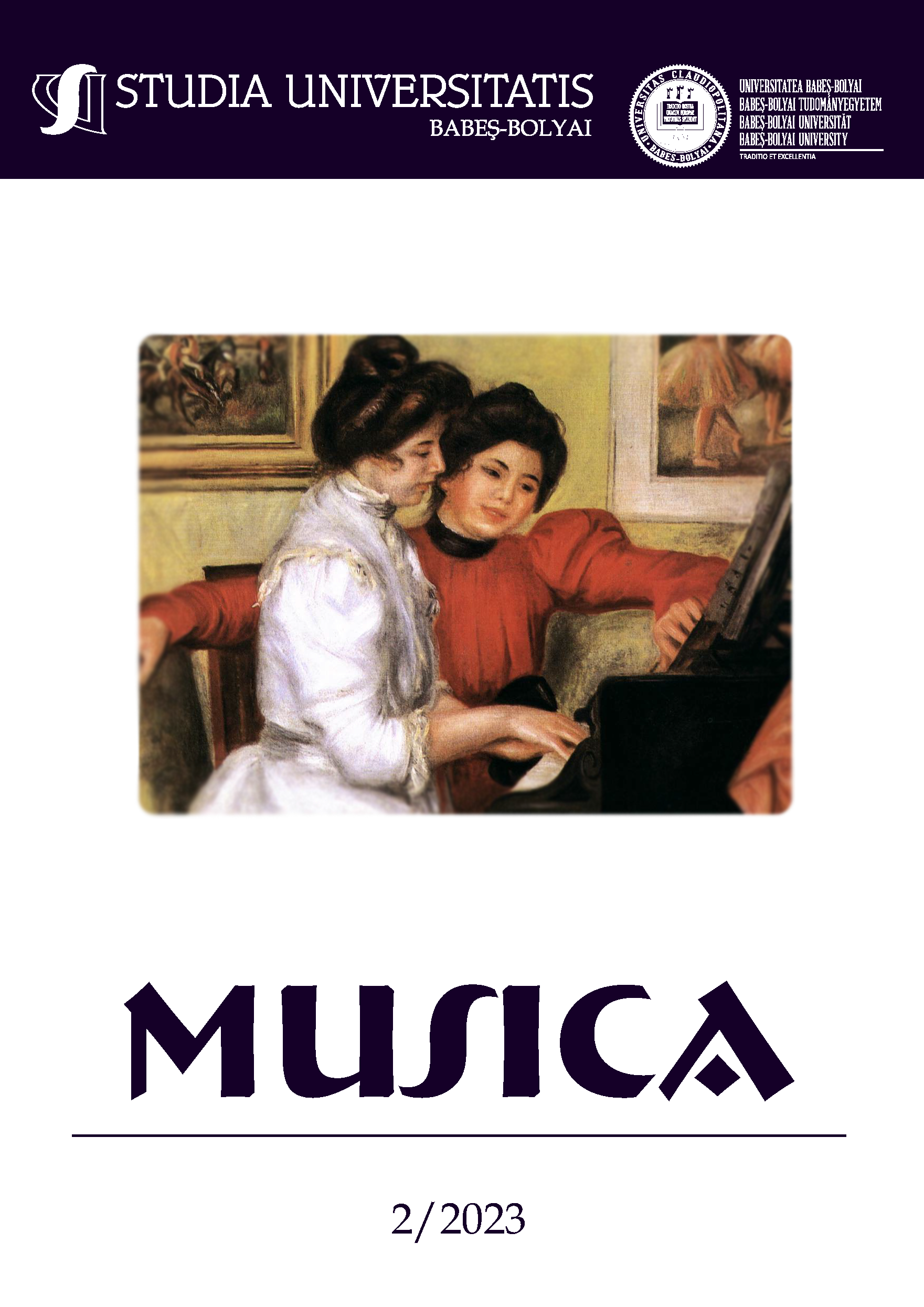László Dobszay: The World of Tones Solfège Book Series and the Timeliness of the Contemporary Edition
DOI:
https://doi.org/10.24193/subbmusica.2023.2.16Keywords:
Kodály-method, solfège, music education.Abstract
The article discusses the necessity of the contemporary publication of The World of Tones series of solfege books by Dobszay. It outlines the areas of Kodály method that are related to the textbooks and describes the solfege publications in use before the series was published.
References
Ádám,J. Módszeres Énektanítás a relatív szolmizálás alapján (1944). (Methodical Singing Teaching Based on Relative Solmization) 1944.
Electronic version of the Corpus Juris Hungarici: DVD Legal Library p. 17.
Csüllög, J. A népdal szerepe a kezdők zongoraoktatásában Magyarországon. (The role of folk songs in teaching piano to beginners in Hungary.) EKF, Líceum Publisher, Eger, 2009.
Csüllög, J. Kodály Zoltán: Hét zongoradarab Op.11. In: Kodály jegyében. (Zoltán Kodály: Seven Piano Pieces Op.11. (In: In the Memory of Kodály.) EKE, Líceum Publisher 2020.
Csüllög, J. A népzene aránya és szerepe a Zongoraiskola kötetekben. (The Proportion and Importance of Folk Music in Piano Method Volumes 1 and 2) In: Parlando 2016. issue 6.
Dobszay, L. A szolmizáció (Solmization) In: Parlando 1961. no. 7-8. p. 17.
Dobszay, L. A Kodály-módszer és zenei alapjai (The Kodály method and its musical basis) In: Parlando 1970, No. 11, pp. 15-26.
Dobszay, L. Kodály Zoltán zenepedagógiai eszméi és népzene kutatásunk (Zoltán Kodály’s Music Pedagogical Ideas and our Folk Music Research) In: Parlando 1968. issue 2. pp. 3-10.
Goll, J. Blätter zur Verbreitung der Chevéschen Elementar (Galin-Paris-Chevé féle tanmód) [Sheets for the Dissemination of Chevé’s Elementary (Galin-Paris-Chevé education method)] 1884.
Kerényi,Gy. and Rajeczky, B. Énekes Ábécé (1939) (Singing Alphabet) 1939.
Kodály, Z. Iskolai Énekgyűjtemény I-II. kötet (School Song Collection Volumes I-II) 1943-44.
Kodály, Z. Kell-e szolfézs a Zeneművészeti Főiskolán? (Should there be Solfege at the Academy of Music?) In: Magyar Zene 1965/6. pp. 640- 641.
Kodály, Z. Vidéki város zeneélete (The Musical Life of a Rural Town) lecture, 1937.
Kodály, Z. Megjegyzések a „Szó-Mi” népiskolai énektankönyv bírálóinak viszontválaszára (Notes on the Reply to the Critics of the ‘Szó-Mi’ Folk School Singing Book) (Retrospect Volume I. p. 152).
Kodály, Z. Százéves terv (One Hundred Year Plan) In:Retrospect Volume I. pp. 288-289.
Kodály, Z. Magyar népzene (Hungarian Folk Music) In: Retrospect Volume II.
Kodály, Z. Tanügyi bácsik! (‘Seniors’ in Education!) In: Retrospect, Volume I, pp. 306-307.
Kodály, Z. Zenei nevelésünk reformjáról (On the Reform of our Music Education) In: Retrospect, Volume I, p. 287.
Kodály,Z. A magyar népdal művészi jelentősége (The Artistic Significance of Hungarian Folk Song) In: Retrospect, Volume I, p. 35.
Kónya, É. A Békés-Tarhosi Énekiskola-az első magyar állami énekiskola története (The Békés-Tarhos Music School - the History of the First Hungarian State Singing School - thesis, EKF - Faculty of Humanities 2005.
Molnár, A. Megjegyzések a szolfézs- tárgy főiskolai oktatásáról (Notes on the Teaching of Solfege at the College Level In: Magyar Zene 1965/5. pp. 508-510.
Papp, M. Dobszay László köszöntése (László Dobszay’s Greeting) In: Muzsika July 1999, Volume 42, Number 7, Page 18.
Szolfézs példatár-alsófok I-II-III. kötet, szerk.: Agócsy László- Irsai Vera (Solfege Example-Basics Volumes I-II-III, ed. by László Agócsy-Vera Irsai. Zeneműkiadó, Budapest,1953-56.
Szőnyi, E. A zenei írás-olvasás gyakorló füzetei (Erzsébet Szőnyi: Practice Books for Musical Reading and Writing⟯, Editio Musica, Budapest, 1955-56.
Ujfalussy, J. Zeneoktatás és nemzeti hagyomány (Music Education and National Tradition) In: Parlando 1984. no. 1. pp. 6-16.
Downloads
Published
How to Cite
Issue
Section
License
Copyright (c) 2023 Studia Universitatis Babeș-Bolyai Musica

This work is licensed under a Creative Commons Attribution-NonCommercial-NoDerivatives 4.0 International License.



